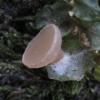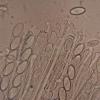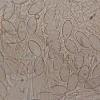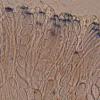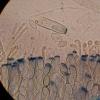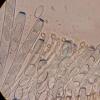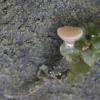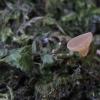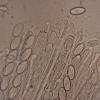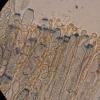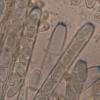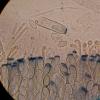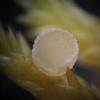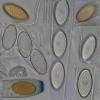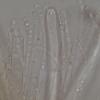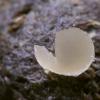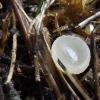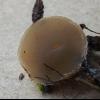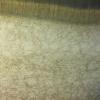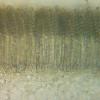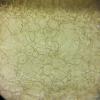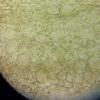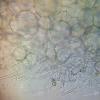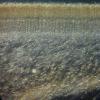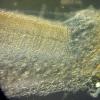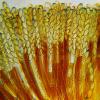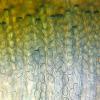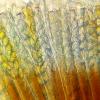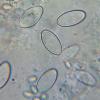
12-01-2026 22:02
Ethan CrensonHello all, I am hoping someone will have some ins

11-01-2026 20:35
Hello.A very tiny pyrenomycete sprouting sparsely

12-01-2026 05:24
 Danny Newman
Danny Newman
Cyathicula coronata on Urtica dioicaCataloochee Di

15-12-2025 11:49
 Danny Newman
Danny Newman
ITS sequences from the following two collections B

09-01-2026 17:41
Arnold BüschlenHallo, F. dilatata wird von vielen Bryoparasiten

10-01-2026 20:00
Tom SchrierHi all,We found picnidia on Protoparmeliopsis mur

07-01-2026 22:22
 Danny Newman
Danny Newman
Tatraea sp. on indet. hardwood The Swag, Great Sm

10-01-2026 01:18
 Danny Newman
Danny Newman
cf. Neovaginatispora fuckelii on indet. shrub Pre

07-01-2026 10:24
 Danny Newman
Danny Newman
Pezicula sp. on indet. hardwood Appalachian Highl

09-01-2026 10:08
 Blasco Rafael
Blasco Rafael
Hola, en el mismo habitat que la anteriorRetamaDia
Voici un champignon récolté le 4 janvier sur Mnium affine en forêt de Fontainebleau
(77) ; un seul exemplaire de 5mm.
Est-ce que quelqu'un parmi vous a une idée?
Merci d'avance.
Mila

this looks like a Peziza to me although I am not sure that a helotialean species can be excluded. Curved paraphyses look characteristic, but where do they occur? With at least double resolution of your pics I could perhaps be more sure.
Zotto

Avais tu la certitude que le bryophyte était le véritable support ?
Les spores m'évoquent plutôt un Ciboria mais en regardant la réaction à l'iode, je ne vois pas celle d'une Sclerotiniaceae et je me demande même s'il n'y a pas d'opercules à certains asques.
Amitiés
Michel
Merci Michel et Zotto
Les photos en plus haute résolution envoyé en privée.
Mila

I attach here some of your pics in higher resolution. I see an operculum in some of them. The amyloid ring is indeed somewhat similar to Sclerotiniaceae, but the operculum and the ellipsoid spores with a striking nucleus in the centre point to a Peziza in my opinion.
A section of the whole apothecium would be helpful to see the texture, cell size, and the layers.
Zotto
it could be a Thecotheus species. Two years ago I found a very similiar collection which grows also on mosses at a place which was urinated by sheeps and hares. First I thought also of Bryoscyphus or something similar, but the asci were also operculate.
Lastly Dirk and I determinated it as Thecotheus cf. uncinatus. The mature spores were finely warted, the immature spores were smooth.
Best, Uwe

Did you also have such paraphyses in your collection as in Mila's fungus ? As Zotto said, they look here characteristic for Peziza .
Amitiés
Michel
And we found near to the apothecium on moss also one apothecium on hare dung.
Due the apical blueing of the ascus we thought firstly of Peziza but we found no Peziza species which fits with our observations. After the study of the literature we come to the conclusion that the genus Thecotheus fits also well. We are not sure concerning our determination but we have no other idea than Thecotheus.
Best, Uwe

Michel, I mean't that they look characteristic in generall, not in regard to Peziza where I do not recall a species with this feature.
But I was unaware of such merely apical and strong iodine reaction in Thecotheus. Those that I know react along the whole ascus.
Zotto
Best, Uwe
Ma récolte date du 4 janvier dernier. Si tu le souhaites, je peux t'envoyer le champignon sec.
Mila

Zotto

So I doubt a bit that your and Uwe's finds belong in that genus.
Zotto

i agree with you. the kind of iodine-reaction is typical peziza and not really thecotheus comparable. i recently think its more likely a (perhaps undescribed) probably coprophile peziza. @mila: can you give informations about spore-measure and ornamentation, so we could compare better with our collection? the ornamentation of our find was fine verrucose, more dense at the poles!
one reason that we considered thecotheus was that our fruitbodies were very small (2-4mm!) and nearly colourless.
best
dirk
Ma récolte date du 4 janvier et l'observation au microscope est fait avec du matériel frais. Les spores sont lisses, de diamètre de 15-19x6-10µm. J'ai posté ce matin l'exsiccata de mon seul exemplaire à Uwe.
Mila
I had now the opportunity to investigate Mila's finding. I think it's the same fungus which I found together with Dirk. The spores of Mila's finding are also like ours at maturity finely warted only immature smooth. In Lugol the asci are strongly blueing at the apex (as shown on the pictures) but faintly also the whole ascus.
Best, Uwe

on your photo of your find there are some ochre-coloured spores. Is this due to iodine or is it a natural colour?
Zotto
Best, Uwe
Sorry to use this thread but I'm pretty sure I found the same species of mushroom.
I found it a week earlier but the fruiting bodies were completely immature.
They grew on plant debris and moss soaked with feces.
All features match the presented in this thread. However, no one mentions the outer surface of the fruiting body. In my sporocarps on the outer surface there were thinner hyphae covering the entire sporocarps. Have you seen it too?
The diameter of the largest sporocarps was 6-7 mm.
Mature spores slightly rough!
Mirek
